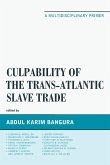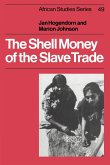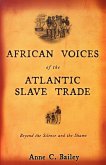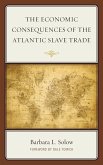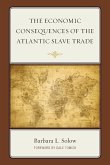Based on innovative and extensive research, this edited volume examines the complex and unique human, cultural, and religious exchanges that resulted from the enslavement and the trade of Africans in the North and the South Atlantic regions during the era of the transatlantic slave trade. The book shows the connections between multiple Atlantic worlds that contain unique and diverse characteristics. The Atlantic slave trade disrupted African societies, families, and kin groups. Along the paths of the slave trade, men, women and children were imprisoned, separated, raped, and killed by war, famine and disease. The authors investigate some of the different pathways, whether physical and geographical or intellectual and metaphorical, that arose over the centuries in different parts of the Atlantic world in response to the slave trade and slavery. Highlighting unique and similar aspects, this groundbreaking book follows the trajectories of individuals, groups, and images, rethinking their relations with the local, and the Atlantic contexts. Although not neglecting statistic data, the volume focuses on the movement of groups and individuals as well as the cultural, artistic and religious transfers deriving from the Atlantic slave trade. Privileging multidirectional and transnational approaches, the authors investigate regions and groups usually underrepresented in Atlantic scholarship. The various chapters reassess the results of the transatlantic slave trade interactions that gave birth to mixed groups, cultures, and artistic forms on both sides of the Atlantic Ocean. Some chapters examine the trajectories of North Americans who fought against slavery, as well as those historical actors who benefited from the trade by selling and buying enslaved people. Other chapters study the lives of enslaved Africans and people of African descent, in order to understand how these experiences are brought to the present and reinterpreted by the later generations through visual arts and film. As a number of contributors included in this volume argue, the exchanges that resulted from the movement of peoples, goods, ideas, mentalities, tastes, and images and their legacies did not stop with the end of the Atlantic slave trade and slavery, but remain the object of continuous transformation, adaptation, and reinvention. Challenging the prevailing Atlantic world scholarship that usually privileges economic exchanges and demographic data, the book illuminates the multiple experiences of African and African-descended male and female historical actors in the North and the South Atlantic spaces. The various paths of the slave trade explored in the different chapters of this book shed light on the trajectories and representations of African individuals and their descendants in the Atlantic basin and beyond. Although the victims are no longer alive to narrate their experiences, the various authors attempt, even when the sources are scarce, to retrace the slaving paths of the male and female victims, allowing us to figure out the development of multiple Atlantic individual and collective encounters and interactions. Eventually, some contributors show that these individuals and groups who were forced into different pathways, sometimes were able to negotiate, to make choices, and seal various sorts of alliances, facing the challenges imposed by the Atlantic slave trade brutal dynamics. This is an important book for collections in slavery studies, Atlantic history, history of the United States, Latin American and Caribbean history, African studies and African Diaspora.


